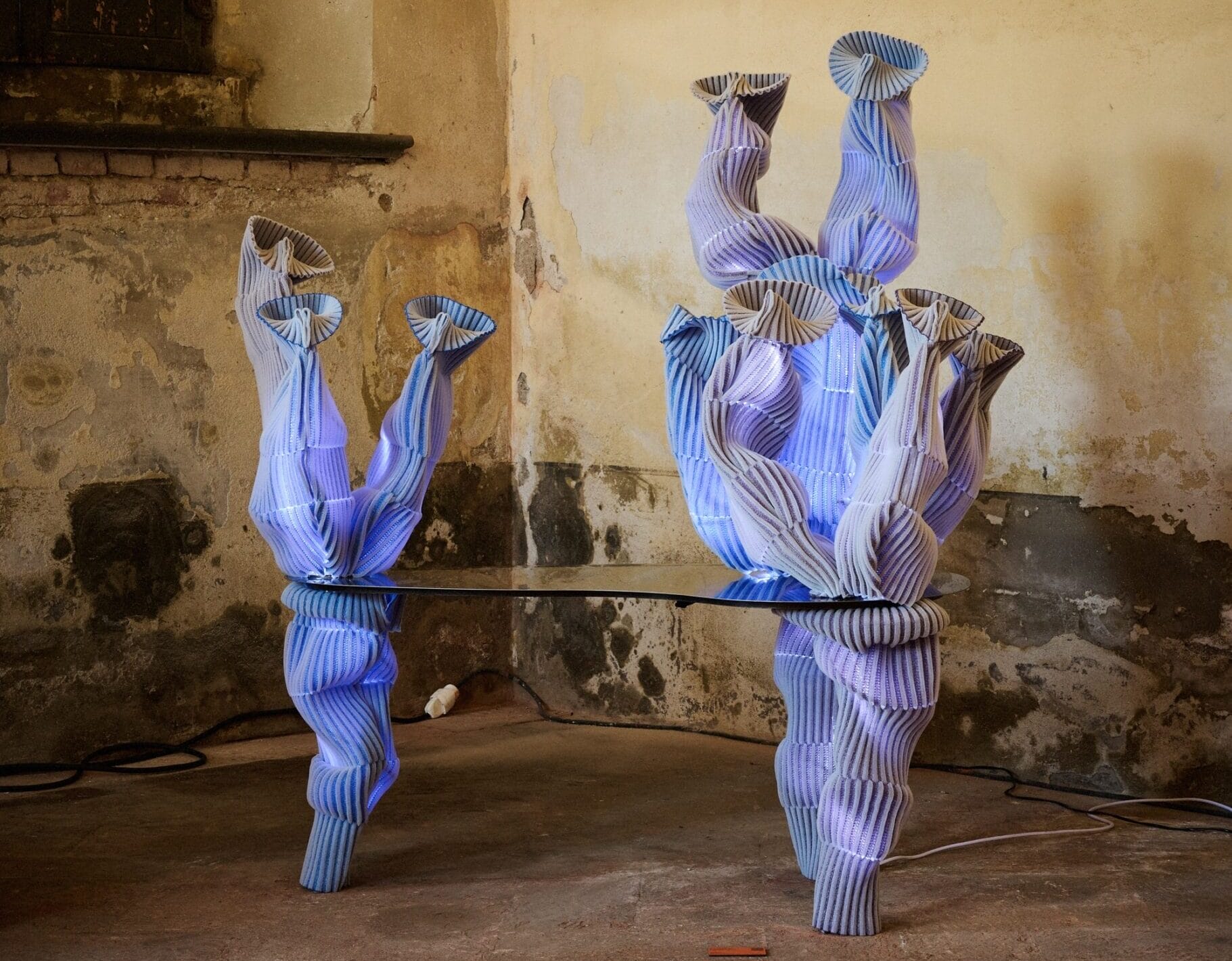This post was originally published on Colossal
Sprouting like coral or fungi, Sangmin Oh’s biologically-inspired lighting designs and furnishings merge form and function. Based between The Netherlands and South Korea, the designer (previously) is fascinated by the interplay of material, aesthetics, and sustainability.
Oh’s sculptural pieces revolve around the use of textiles to create knitted or woven shades for lamps and other objects. In a new project titled SOIL TO SOUL, he and a team of studio assistants have assembled an installation using Heracron brand aramid yarn—a type of lightweight and strong polymer fiber that is resistant to the effects of heat, abrasion, and chemicals.

Aramid yarn is often used in bulletproof vests, heat-protective clothing, and as coverings for optical cables. Oh utilizes scraps of the material discarded by the manufacturer, turning to 3D knitting technology to reimagine colorful, textural pieces of fabric.
“The functional narrative of Heracron aligns with that of mushroom, which protects and sustains the earth,” Oh says of the works in SOIL TO SOUL. “Its hair-like strands mirror the skein of mycelial threads. Inspired by this similarity, the shape and pattern of the knitted fabric were designed to reflect these qualities.”
Oh’s work is currently on view in Seoul at RE;CODE, a brand focused on upcycling, where pieces like a sprawling, fungi-inspired floor lamp comprise the illuminated window installation. See more on his website and Instagram.







Do stories and artists like this matter to you? Become a Colossal Member today and support independent arts publishing for as little as $7 per month. The article Sangmin Oh Illuminates Upcycled Industrial Fiber in Knitted Lighting Sculptures appeared first on Colossal.





0 Comments